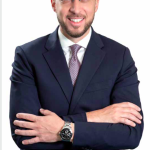
Ahmed is a proven strategic financial advisor and CFO with more than 15 years of experience in Corporate Finance and Financial advisory focused on M&A, financial engineering, business planning, debt restructuring and due diligence.
Ahmed provides support and financial leadership and financial planning function and is advising on value realization initiatives of different companies.
With a background in financial advisory and consulting as well as contracting, Ahmed has successfully led multiple business restructuring transactions, managed implementation of new corporate governance frameworks, advised large regional companies in strategy development andbusiness planning and executed financial and debt restructuring mandates.
Ahmed Hadid holds an MA in Finance and Investments from the University of Nottingham, UK.
• What are the challenges in transformation of family businesses into corporates / structured businesses?
There are always challenges when family businesses start the transformation journey from a typical one-man show family business into a more structured corporate business. Such transformation challenges vary depending on the business nature and family structures. However, there are usually few aspects that might be common across the privately-owned com- panies. These are the automation of the business processes into a more integrated systems, the cultural change among the key personnel and the delegation of authorities through the implementation of a robust authorization matrices based on best practices.
These hurdles can usually be dealt with through creating an environment which allows the owner(s) to adapt more systematic decision-making mechanisms. When it comes to automating the business processes, it is advisable to implement the new systems and ERPs gradually instead of enforcing a fully automated system from day one. This usually allows for a smoother change management process as it represents a learning curve for both the business owners as well as the key personnel. This leads to the second challenge which is the cultural change of the key people in the organization who are required to play an essential role in any transition. In order to ensure that these key people are positively reacting to the organization change, they need to firstly be part of the change leading team and secondly, they need to be empowered by highly qualified staff that can support them in achieving their assigned objectives. This would enable the family business to transform from highly centralized decision-making models into more flexible ones which are based on building strong functions equipped with right human capital skills.
Finally, the delegation of authorities which is a must for any transformation plan for family-owned businesses. In many privately-owned companies, the resistance for such plan comes from the founders who are usually in the best place to call the shots when it comes to their success stories or in other words the companies they have built from scratch. While this is very true, but there should always be a long-term thinking of building the suitable structures that can protect their well-established conglomerates when they wish to step-out and have a more of an advisory role.
In addition, there might be anoth- er resistance from key personnel when it comes to the delegation of authorities as they might see this as a degrade from their comfort zones. It is inevitable under such circumstances not to bring on board “new blood” to ensure the senior management authorities are segregated among different functions and individuals.
There are many other aspects which also constitute a vital part of the family business transformation journey, such as the succession planning from one generation to the other and the creation of proper corporate governance structures through empowered board structures and committees. Having said this, the recent economic developments globally and regionally makes the transformation of family businesses and offices into a more structured corporates a must.
• What do you think the Recent market trends are?
In line with the global economic and political risks, both local and international banks started implementing robust credit policies and systems. In fact, this seems to be a by-product of the overall economic reforms and initiatives being implemented at a national level. Going forward, this should lead to a more structured credit market with proper credit profile of the market players. The concept of granting facilities on name basis is declining. Banks are building their internal control capabilities though the establishment of a more sophisticated engineering departments which are directly involved in the credit approvals process. The special assets functions are becoming more active in streamlining their banks portfolios and achieve better bottom lines and healthier balance sheets. These changes in the banking sector have led the banking sector leaders to have an income statement focused approach instead of a balance sheet driven one.
Such market dynamics creates some key challenges when it comes to the treasury function of the companies CFOs. These challenges include the timely funding where the financial planners should focus on building their abilities to predict their financing requirements in advance and keep up to date with the developments in the internal approval chains of the banks and their new requirements and credit scoring methodologies. Cost of funding is another aspect to be maintained under such market conditions especially with the on-going restructuring initiatives in the market as well as the increasing rates inter- nationally. The delayed collections created a burden on businesses to meet their debt commitments. The working capital cycle of the businesses deviate usually from the standard trends creating a mismatch in the debt obligations towards the lenders. On the other hand, it is becoming imperative that the collections management is becoming a key function for companies and the size of the collections teams is growing within the Finance functions.
The previously discussed aspects and challenges, makes the finding of alternative financing solutions, including the mezzanine financing structures, essential focus area to the business owners and their CFOs.
• Can you define the CFO role?
Nowadays the CFO role is becoming vital to ensure smoother operations continuity. In order to add value, the CFO should be the focal point of contact for the different stakeholders, both the internal and external ones. Being the channel of information flow among the operational teams, the owners and external stakeholders, enables the owners to make informed decisions in their best interest. In short, the good communication is the corner stone for any successful CFO who can add value it his organization as it empowers the operational as well as the strategic initiatives of the business.
• Any special advise you can share with our readers about the CFO role?
The role of the CFO is evolving into an increasingly strategic role, strategic vision of the core competencies of the CFO. If we can take anything good from the global pandemic of 2020 and 2021, it is the disruption of business roles and routines.
Covid-19 brought about obvious changes in work patterns, pushing companies towards forced digitization.
Beyond digitization, the pandemic also challenged the financial strategy of many companies. However, with a sound financial strategy that included sufficient cash reserves, and cash flow management strategies were able to adapt and over- come the adverse conditions.


